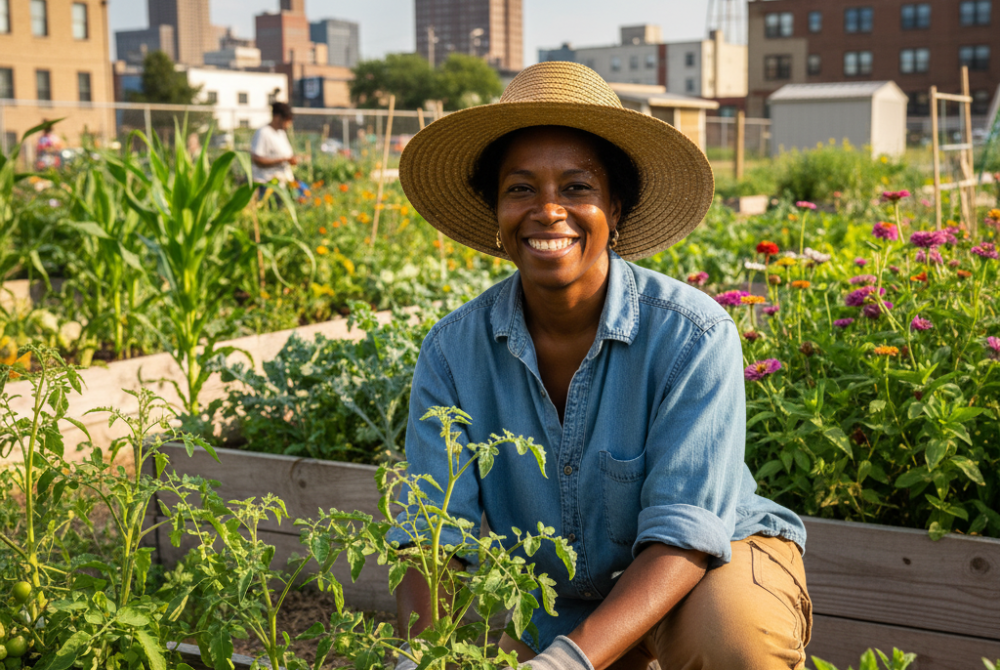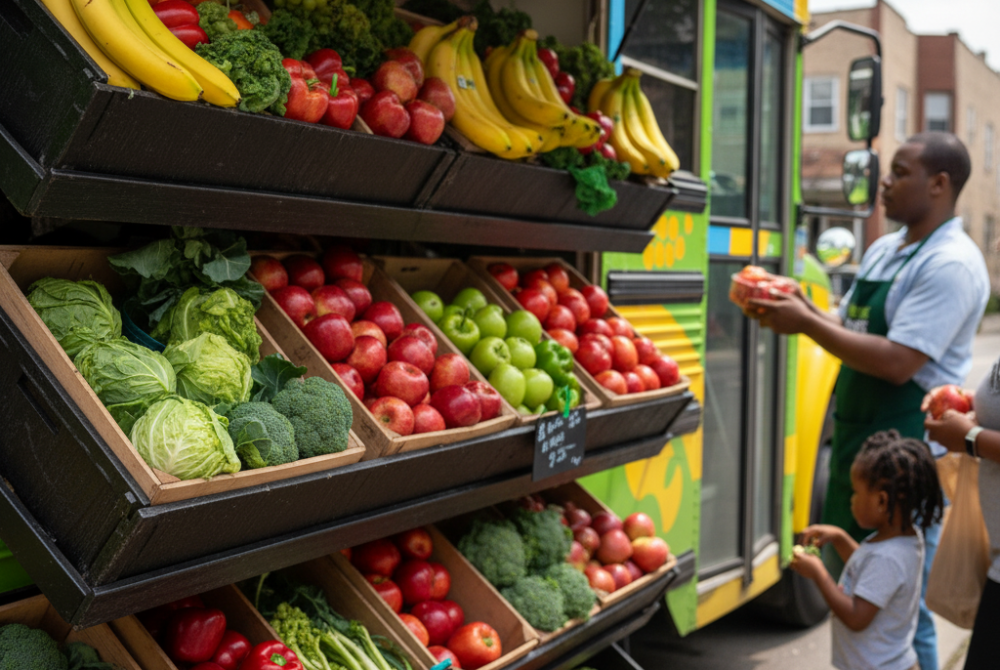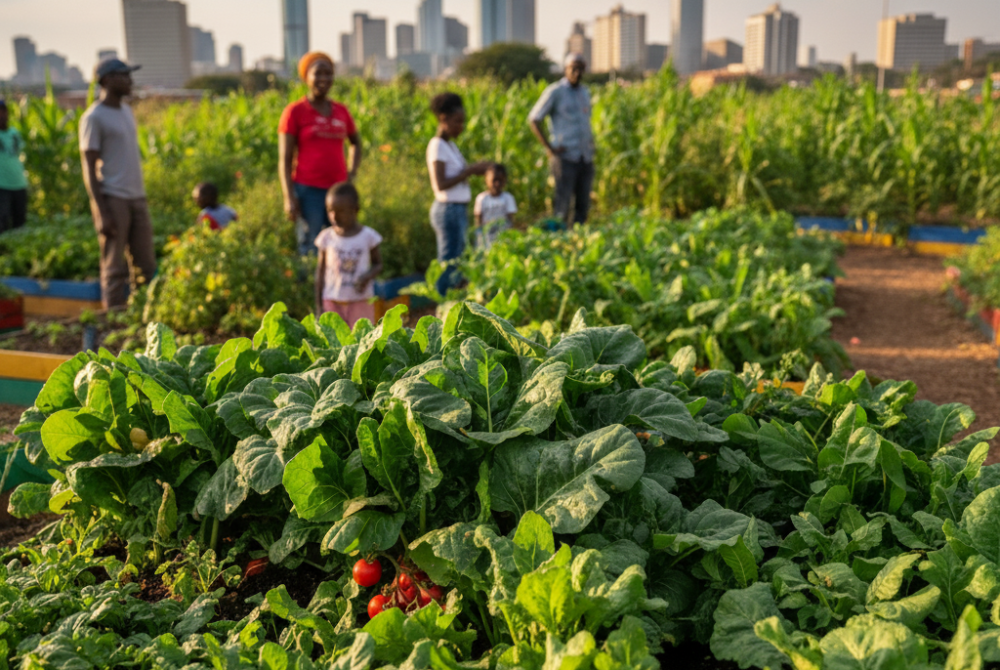Food deserts are areas where it is difficult to purchase fresh and healthy food. In this column, we will delve into the meaning, current state, and ways to improve the situation of food deserts.
The Reality of Food Deserts
Maria, a single mother raising two children in Chicago, has to take a two-hour bus ride to reach the nearest supermarket. Without a car and on a tight budget, she struggles to provide fresh fruits and vegetables for her family, often resorting to unhealthy junk food from nearby convenience stores.
As a result, her children show signs of malnutrition and obesity.
―
What is a Food Desert?
―

A. Food deserts are areas where it is difficult to access healthy food necessary for maintaining a good diet.
In the United States, food deserts are defined as areas where:
■ There is no supermarket within a 400-meter walking radius,
■ The median household income is below 185% of the federal poverty line,
■ Over 30% of households do not have a car,
■ The Healthy Food Availability Index is low.
These areas are primarily inhabited by low-income populations. They often have poor facilities and security, but lower rents, making it challenging to find quality food.
Residents in these areas tend to rely on fast food high in calories, sugar, and unhealthy fats, increasing the likelihood of diet-related health issues such as obesity, diabetes, and heart disease.
―
Global Status of Food Deserts
―

Food desert issues are prevalent worldwide, regardless of being in developed or developing countries, and are particularly pronounced in urban outskirts and rural areas.
According to the FAO's Global Report on Food Crises 2023, millions of people globally experience food insecurity due to limited access to nutritious food.
1. Developing Countries
■ Acute Food Insecurity
In 2023, about 258 million people in 58 countries experienced acute food insecurity, with more than half concentrated in Afghanistan, the Democratic Republic of Congo, Sudan, and Yemen.
■ Child Malnutrition
Major food crisis analyses reveal that approximately 35 million children under five suffer from wasting or acute malnutrition, with 9.2 million in the most severe stage.
2. United States
■ According to the United States Department of Agriculture (USDA), as of 2023, about 34 million Americans live in food deserts, with approximately 27 million residing in rural areas facing significant challenges in accessing supermarkets or fresh food sources.
3. United Kingdom
■ Although food deserts are considered less severe in Europe than in the US, they are still an issue in certain low-income areas within large cities. The Food Foundation reports that around 1.2 million people in the UK are in a state of food insecurity.
4. Japan
■ A survey on food accessibility by the Japanese Ministry of Agriculture, Forestry and Fisheries Policy Research Institute found that about 46 million people, accounting for 36.2% of the total population, face difficulties in purchasing fresh food.
Go to ↓↓↓ |
For more details, see the 2023 Global Food Crisis Report. ↓↓↓ |
―
What Types of Food Deserts Exist?
―
Major media and international organizations classify food deserts based on accessibility, economic factors, and community characteristics.
1. By Accessibility
■ Urban Food Deserts
● Typically occur in low-income areas within large cities.
● Lack major food suppliers like supermarkets, relying mainly on convenience stores or fast-food outlets.
● Limited access to transportation or high costs to reach grocery stores.
■ Rural Food Deserts
● Found in rural areas with low population density spread over large areas.
● Grocery stores are often far away, making access nearly impossible without a vehicle.
2. By Economic Factors
■ Low-Income Food Deserts
● Households have low incomes, making it difficult to afford healthy food.
● Dependence on government support or non-profit assistance to secure enough groceries.
■ High-Cost Food Deserts
● Some areas have prohibitively high food prices.
● For example, in city centers where only high-end grocery stores are available.
3. By Community Characteristics
■ Elderly Food Deserts
● Areas with a high elderly population where mobility issues make it difficult to access grocery stores.
● Physical limitations or medical problems add to the difficulty in securing food.
■ Minority Food Deserts
● Areas predominantly inhabited by racial or ethnic minorities.
● Often lack grocery stores due to discrimination or policy inequalities.
Addressing the diverse issues of food deserts requires approaches tailored to the community's characteristics.
―
How Can We Reduce Food Deserts?
―
Multiple strategies are necessary to address the food desert issue.
1. Improving Infrastructure
● Supermarkets or markets providing fresh food should be easily accessible.
2. Policy Support
● Governments and communities must collaborate to create policies and support programs addressing food desert issues.
3. Education
● Educating residents on nutrition and healthy eating habits is crucial to understanding the importance of choosing good foods.
4. Promoting Local Agriculture
● Developing systems for local production and supply of fresh food to increase food self-sufficiency. Community gardens and urban farming are good examples. These methods provide fresh produce to residents and foster a sense of community.
Efforts to Combat Food Deserts
1. Urban Agriculture and Community Gardens in Detroit
Detroit's economic struggles and population decline have led to many areas becoming food deserts. To address this, the Detroit Black Community Food Security Network established urban farms, enabling residents to grow and consume fresh produce. This program enhances food accessibility and contributes to job creation and community revitalization.

(A Black farmer working on Detroit's urban farms)
2. Fresh Moves Mobile Market in Chicago
Chicago's Fresh Moves Mobile Market is a successful example. This program operates a converted bus as a mobile grocery store, supplying fresh fruits and vegetables to food desert areas. Fresh Moves travels to various neighborhoods on a set schedule, selling fresh food.

(Fresh Moves uses a converted bus to sell fresh food to residents in the food desert areas of South and West Chicago)
3. Bolsa Família Program in Brazil
Brazil's Bolsa Família Program supports low-income families with cash assistance to meet basic needs, including food. This program reduces the economic burden on families and provides children with access to nutritious food, contributing to long-term community health and well-being.

(In Brazil, citizens with a per capita income of up to R$218 per month receive a Bolsa Família card to help low-income families purchase food)
4. Urban Agriculture Projects in South Africa
South Africa's urban agriculture projects use vacant lots and rooftops to grow crops. This program increases food access, positively impacts community education, and creates jobs by enabling residents to grow and consume their own produce.

(Urban agriculture, which produces vegetables, crops, and livestock in and around cities, is widespread in Africa and plays an important role in feeding urban populations)
These diverse examples demonstrate the need for community involvement and innovative approaches to solve food desert issues. Customized solutions for each community's characteristics and needs are essential for reducing food insecurity and building healthy, sustainable food systems.
To learn more about ways to combat poverty, check out the following articles! ↓↓↓ |
Food deserts are not distant problems. They might be issues faced by our friends or colleagues. Solving this problem requires everyone’s interest and participation.
Getting involved in community gardens or urban farming projects, growing fresh vegetables with family and friends, and sharing them can be one way to address food desert issues.
Taking an interest in policies to address food deserts and raising your voice in support can make a significant difference. Your small voice can create big changes.
“Food is love.”
-Sun Myung Moon,
Founder of the Sunhak Peace Prize-
Learn More |
Written by Sharon Choi
Director of Planning
Sunhak Peace Prize Secretariat

